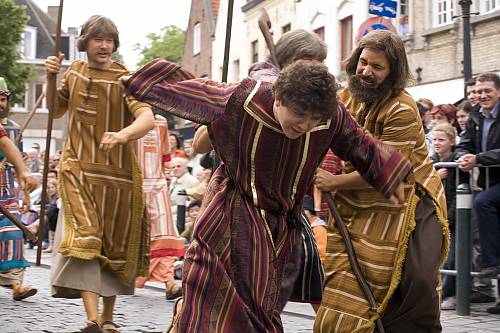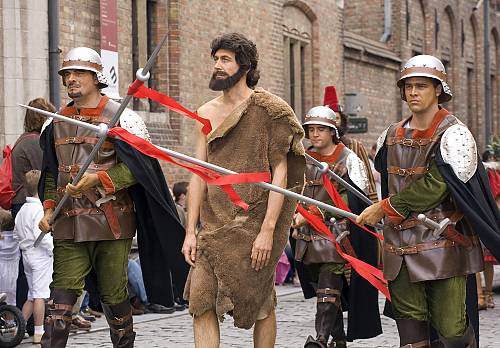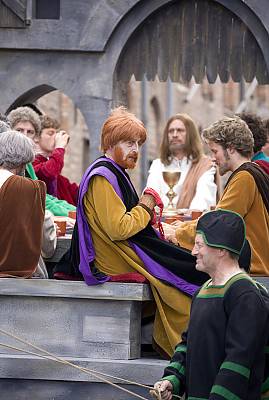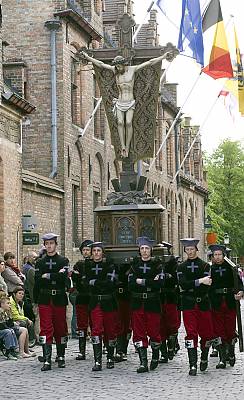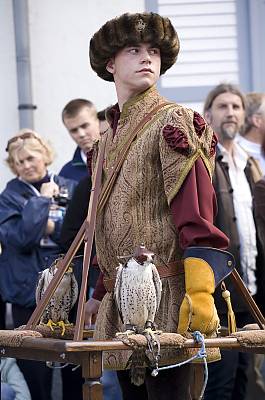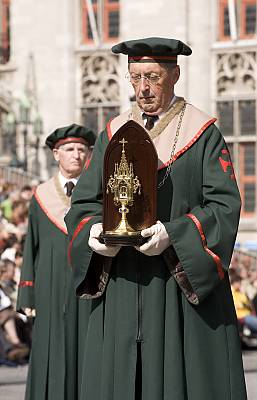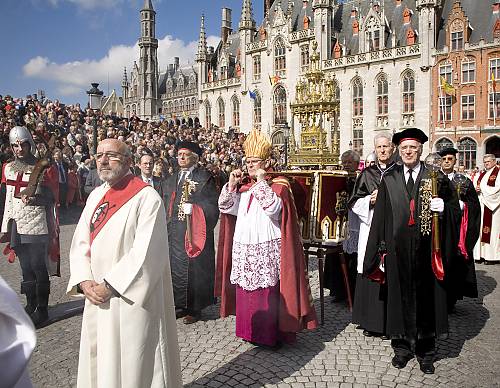Procession of the Holy Blood in Bruges
Inscribed in 2009 (4.COM) on the Representative List of the Intangible Cultural Heritage of Humanity
Each spring, 30,000 to 45,000 spectators gather in the heart of the Belgian city of Bruges to watch the Procession of the Holy Blood on Ascension Day, forty days after Easter. The colourful pageant dates back to the thirteenth century, when a citizen of Bruges is said to have brought the Relic of the Holy Blood of Jesus Christ back from the Second Crusade. Led by the thirty city notables of the Brotherhood of the Holy Blood and accompanied by brass bands, more than 1,700 citizens on foot, in carts or on horseback perform stories from the Old Testament, the life of Jesus and the history of Bruges. Then, various civic groups venerate the relic and the procession concludes with a prayer ceremony, performed in several languages to accommodate the international audience. For centuries, the ceremony has played an important role in expressing the identity of Bruges’s inhabitants and in facilitating encounters with people from outside the city. Participants are a representative cross-section of ages, families and communities. Some inhabitants have participated for forty or fifty years, and émigrés often return for ‘Bruges’s Finest Day’. The Procession is a vibrant example of how a collective ceremony can unite a city through ritual enactment of its history and beliefs.

